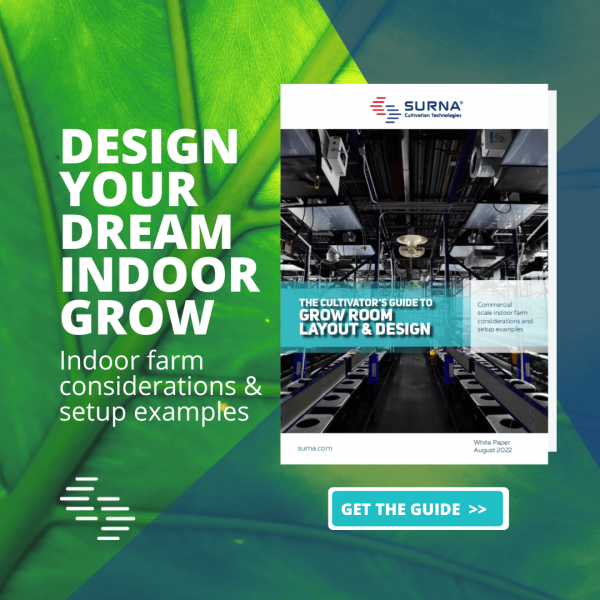We strive to be a resource for information not just for our clients, but for the industry as a whole. And with the experience we’ve gained through our involvement with so many cultivation construction projects, we’ve collected quite a lot of information! So, when the opportunity to work with some of our design and construction peers to put together a design/build resource for the industry, we jumped at it. The result was “Build Your Grow,” which you can read here. However, we thought it would also be helpful to do a quick recap of the top takeaways for a quick read.
OPPORTUNITIES FOR CONTINUOUS IMPROVEMENT
Each facility construction project is a learning opportunity for the cultivator. Lessons learned from first build outs carry over to improvements on subsequent facilities and expansions. Multi-facility operators can gain an edge over their single facility competition by putting that experience to work improving efficiencies and lowering costs. However, single facility operators can do the same by starting relatively small and expanding in increments.
HVAC DESIGN IS VITAL
The overarching message of all construction professionals in our Build Your Grow resource was the importance of HVAC design when constructing a facility. While this is a subject close to Surna’s heart, we promise we didn’t pay for them to say that! (Surna got its start in the industry by providing HVAC technologies for growers and we now provide mechanical, electrical and plumbing design in addition to our “concept to commissioning” HVAC products and services). The architect and construction project manager who contributed to the piece called out HVAC as a key component to facility design and construction for several reasons.
Design, Permitting and Construction
The mechanical design is a huge piece of the overall architectural and engineering design for a facility. HVAC design impacts site work and development permit issuance, structural, civil, electrical, plumbing and cGMP compliance where applicable. Close coordination is an absolute must. Additionally, HVAC systems are among the largest, if not the largest, individual expense in facility construction, so early stage conceptual design is vital to developing accurate construction budgets.
Operation
A properly managed climate is arguably the most important component to a successful crop. Poorly managed climates or ineffective pressurization and filtration strategies can, quite literally, bankrupt a cultivation operation. HVAC design also impacts operational efficiencies in the facility, from maintenance to controls tools. Lastly, as energy use is so high on the list of monthly expenses, and HVAC systems account for roughly half of energy use in the industry, operating expenses can be greatly reduced when sufficient thought is applied to the HVAC design.
BUILD WITH CONSISTENCY IN MIND
Consistency was also a—wait for it—consistent theme among the design and construction professionals we spoke with. Just like HVAC, the need for consistency holds true from the design and construction phase through operation of the facility.
At the construction level, maintaining a core architectural and design team through each new facility or phase of construction reduces learning curves and ensures that expectations among the design team are well understood. This strategy also ensures that the core team already understands the cultivator’s specific needs to support their unique cultivation practices. This speeds up the budgeting process, improves time to market, and reduces some of the overall stress associated with constructing a new facility. Maintaining a core team means finding experienced, competent architectural and engineering partners that have licensing in every state or jurisdiction in which you intend to build.
At the operating level, consistency is valuable to brand identity and management of operational expenses. Ensuring that a customer has a similar experience with various products in multiple markets means that the environment must be similarly managed from facility to facility. Similarly, operating expenses and revenues are more predictable when methodologies and technologies are consistent from location to location.
If you are ready to discuss your future design plans, contact us!

